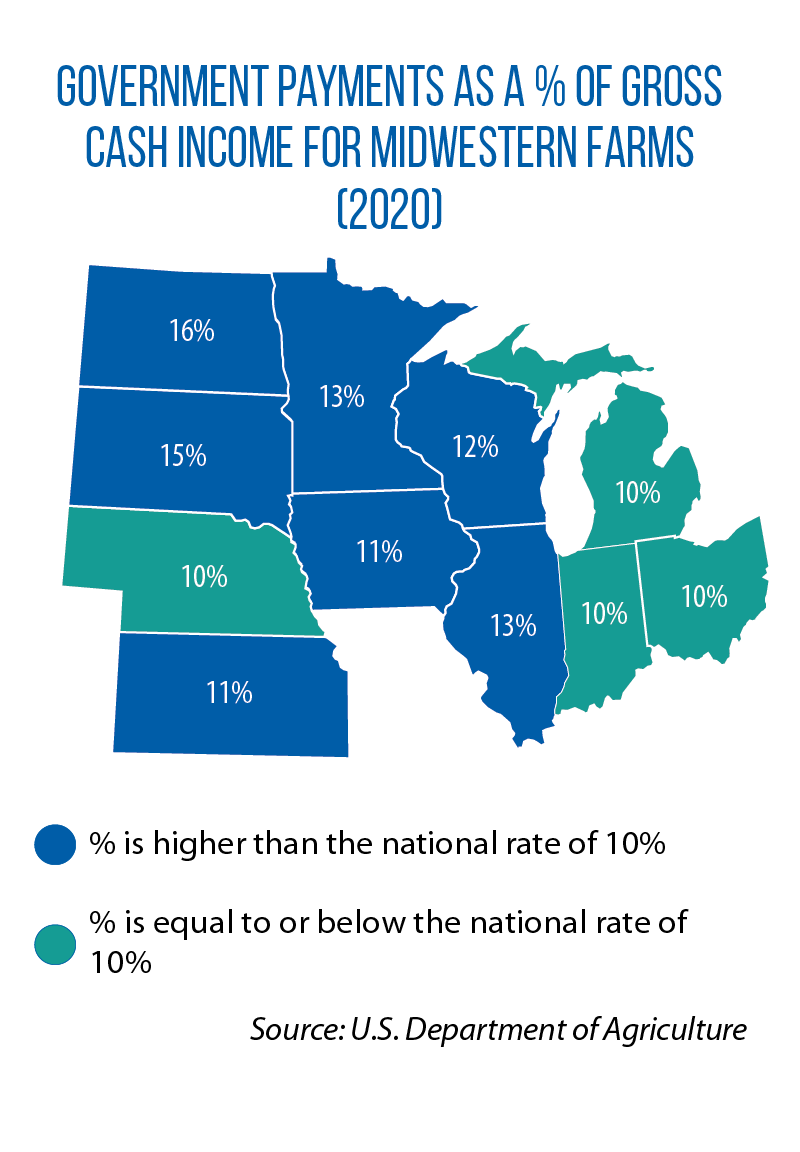Wisconsin uses $100 million of federal COVID funds to help farmers recover from the pandemic
COVID-19 has shaken farming communities, disrupted supply chains and exacerbated the financial instability that already hovered over many farm families after years of trying production and market conditions.
In 2017 and 2018, weather conditions pummeled U.S. farms; in 2019 retaliatory tariffs were implemented and weather conditions led to poor spring planting and then 2020 brought COVID-19.
Since the pandemic began, meat, produce and milk processing plants staggered under labor shortages and supply chain issues. Farmers had to euthanize animals, dump milk and compost fresh produce.
And consumers experienced localized shortages even as farmers were disposing of product that had no place to go.
There were signs of financial distress even before the impact of the pandemic.
Beginning in late 2019, farmer debt, borrowing and delinquencies were up while capital purchases were down.
Subsequent farm-income decreases due to the pandemic varied depending on the commodity; many crop producers saw no change while income from specialty crop, animal and animal products was down an average of 12 percent, according to the U.S. Department of Agriculture.
The federal government stepped in with direct payments beginning in 2019 with assistance to address market disruptions caused by foreign tariffs, then in 2020 with funding to ease the added impact of COVID-19 on farm income.
Nationally, government payments increased from 3 percent of gross cash farm income in 2018 to 5 percent in 2019 and 10 percent in 2020.
In some commodities, government payments in 2020 made up 50 percent of cash farm income. Across all Midwestern states, government payments averaged 12 percent of cash farm income in 2020.
States step up, too
In addition to federal payments, several states have used their allocations of federal COVID dollars to provide further support to COVID-impacted farmers.
Wisconsin led the way, providing $100 million in three rounds of direct aid to farmers who experienced economic losses associated with the pandemic.
Thousands of farmers received funding through the Wisconsin Farm Support Program, an initiative of Gov. Tony Evers and a collaborative of the departments of Agriculture, Trade and Consumer Protection (DATCP) and Revenue.
“Agriculture is $104.8 billion industry in the state of Wisconsin,” DATCP Secretary Randy Romanski says. “Clearly the pandemic has had an economic impact across the state. Governor Evers’ goal with the program was to get payments out in a timely manner and to be nimble, allowing farmers the flexibility to use the funds as they best needed to offset the impacts of the pandemic.”
Farmers with total income of anywhere between $10,000 and $5 million were eligible to receive aid (Initially, farm income had to be at least $35,000, but that threshold was reduced to $10,000 to allow smaller farmers to be eligible.)
Nearly 12,000 farmers received $41.6 million in the first round of funding in June 2020. The second round distributed $8.4 million in August of that year.
A third round distributed $50 million to more than 20,000 farmers in December 2021.
According to Romanski, the payments don’t make anyone whole, but the Farm Support Program was able to assist over 20,000 farmers with direct aid payments of about $2,500.
Funds were split evenly among applicants, rather than being based on farm size.
And in a nod to transparency, a county-by-county map of distribution of the payments is publicly available.
The program has been “transformational” for family farmers, says Wisconsin Rep. Katrina Shankland, a member of the Assembly’s Agriculture Committee.
“[It] helped provide certainty and stability to farmers of all sizes during a difficult time, marshaling needed resources in an efficient and accessible way,” she says.
The Evers administration has focused federal COVID funds on the industries it found to have been most impacted by the pandemic: bars, restaurants, “Main Street” businesses and agriculture.